How to Start a Fire Without Matches or a Lighter

Emergency Fire Starting Without Matches or a Lighter
In the great outdoors, the ability to start a fire is more than just a convenience; it’s a critical survival skill.
While matches and lighters are the go-to tools for starting a fire, there are many situations where they might not be available. Knowing how to start a fire without these tools can be a lifesaver.
Here are several methods to ignite a fire using primitive techniques and natural materials.
- Ignite a Fire Using Friction: Learn techniques like the hand drill and bow drill to start a fire using only natural materials and friction.
- Harness the Sun’s Power: Use a lens, such as a magnifying glass, to focus sunlight onto a tinder, igniting a fire without traditional tools.
- Employ Chemical Reactions: Mix potassium permanganate with glycerin to create a spontaneous fire through a simple chemical reaction.
Fire Starting is a Top Three Survival Skill
In any survival situation, the three most critical priorities are starting a fire, securing a reliable water source, and finding or building a shelter. These essentials form the foundation of survival.
Knowing how to start a fire is essential for warmth, cooking, and signaling for help. A fire can also ward off predators, provide comfort, and purify water.
Meanwhile, finding a water source is crucial for hydration and maintaining bodily functions, as dehydration can occur quickly. A shelter provides immediate protection from the elements and wildlife, creating a safe space to rest and retain body heat.
Mastering these three survival tips can significantly enhance your chances of enduring and overcoming challenging environments.
10 Quick Tips for Fire Starting Without Matches or a Lighter
Here are ten quick and effective methods for starting a fire without matches or a lighter. These techniques utilize common materials and simple tools, perfect for survival or outdoor adventures.
These tips offer practical solutions for creating fire in various conditions, from using a battery and steel wool to focusing sunlight with a magnifying glass.
Each method is described briefly to provide a clear understanding of how to execute them successfully.
- Steel Wool and Battery: Rub steel wool across the terminals of a 9-volt battery to create sparks and ignite tinder.
- Hand Drill Method: Use a straight stick and a fireboard to create friction and produce an ember by spinning the stick rapidly.
- Bow Drill Technique: Make a bow with a string and use it to rotate a spindle against a fireboard to generate enough heat for an ember.
- Flint and Steel: Strike a piece of flint against a steel striker to create sparks that can ignite char cloth or fine tinder.
- Fire Plough: Rub a pointed stick along a groove in a fireboard to generate friction and produce an ember.
- Magnifying Glass: On a sunny day, focus sunlight through a magnifying glass onto a dry tinder to start a fire.
- Potassium Permanganate and Glycerin: Combine these chemicals to create an exothermic reaction that ignites a fire.
- Ice Lens: Shape a clear piece of ice into a lens to focus sunlight and start a fire.
- Chewing Gum Wrapper and Battery: Use a foil gum wrapper connected to a battery to create heat and ignite tinder.
- Fresnel Lens: A Fresnel lens concentrates sunlight onto a tinder, creating enough heat to start a fire.
Preparation and Safety Tips for Fire-Starting
Before attempting any fire-starting method, preparation and safety are crucial.
Gathering Materials and Creating Tinder
Collecting the suitable materials is essential for a successful fire.
- Gather dry tinder (such as dried grass, leaves, or bark).
- Prepare kindling (small sticks and twigs) to feed the initial flame.
- Have larger pieces of wood ready to sustain the fire once it’s established.
Fire Safety and Environmental Considerations
Safety should always be a priority when starting a fire.
- Clear the area of flammable materials to prevent the fire from spreading.
- Keep water or a fire extinguisher nearby in case of emergencies.
- Ensure the fire is completely extinguished before leaving the site.
Friction-Based Fire-Starting Methods
One of the oldest and most reliable ways to start a fire is through friction. This method involves creating enough heat by rubbing two materials to produce an ember that ignites tinder.
1. Hand Drill Technique
The hand drill technique is one of the simplest friction-based methods but requires skill and endurance. A spindle (a straight, dry stick) and a fireboard (a flat piece of wood with a notch cut) would help.
Materials Needed
- Dry wood for the spindle and fireboard
- Tinder bundle (dry grass, leaves, or bark)
- A knife to carve the spindle and fireboard
Steps to Follow
- Carve the Spindle and Fireboard: Use a knife to create a straight spindle about 12 inches long and a flat fireboard with a small V-shaped notch and depression.
- Prepare the Tinder Bundle: Gather dry tinder materials and form a loose bundle.
- Drill: Place the spindle in the fireboard’s depression and roll it between your hands, pressing down to create friction.
- Catch the Ember: As smoke appears, continue drilling until an ember forms in the notch.
- Transfer to Tinder: Carefully place the ember in the tinder bundle and blow gently to ignite.
2. Bow Drill Technique
The bow drill is more efficient than the hand drill and requires a bow, a spindle, a fireboard, and a socket (a handhold to apply pressure on the spindle).
Materials Needed
- Bow (a sturdy branch with a string)
- Spindle and fireboard (same as the hand drill)
- Socket (a smooth stone or hardwood)
- Tinder bundle
Steps to Follow
- Assemble the Bow Drill: Attach the string to the bow and wrap it around the spindle.
- Set-Up: Place the spindle in the fireboard’s notch and the socket on top.
- Drill: Move the bow back and forth to rotate the spindle and create friction.
- Create an Ember: Transfer it to the tinder bundle once an ember forms and blow gently to ignite.
3. Fire Plough Method
The fire plough is another friction-based method but involves a ploughing motion.
Materials Needed
- Fire plough (a hardwood stick)
- Fireboard (a softwood plank)
- Tinder bundle
Steps to Follow
- Prepare the Fire Plough: Carve one end of the hardwood stick to a dull point.
- Create a Groove: Cut a straight groove in the fireboard.
- Plough: Rub the point of the stick along the groove, applying pressure to generate friction.
- Form an Ember: Continue until an ember forms and transfer it to the tinder bundle, then blow gently to ignite.
Using the Sun to Ignite a Fire
Harnessing the sun’s power can be an effective way to start a fire. This method requires a clear, sunny day and a lens to focus sunlight.
4. Magnifying Glass
A magnifying glass or even eyeglasses can concentrate sunlight onto a small point on your tinder.
Materials Needed
- Magnifying glass or convex lens
- Tinder bundle
Steps to Follow
- Find Direct Sunlight: Ensure a clear, sunny day.
- Focus Sunlight: Use the magnifying glass to focus sunlight on a small tinder point.
- Ignite Tinder: Hold the focus steady until the tinder begins to smoke.
- Blow to Ignite: Once smoldering, blow gently to produce a flame.
5. Fresnel Lens Fire Starting Technique
Using a Fresnel lens is an efficient and straightforward method of starting a fire by harnessing the sun’s power. The lightweight and compact tool can focus sunlight into a sharp point, generating enough heat to ignite tinder.
Materials Needed
- A Fresnel lens (or magnifying glass)
- Tinder bundle (dry grass, leaves, or bark)
- Sunny day
Steps to Follow
- Gather Your Materials: Get a Fresnel lens and dry, finely shredded tinder.
- Position the Tinder: Place the tinder bundle in direct sunlight.
- Angle the Lens: Hold the Fresnel lens between the sun and the tinder, focusing the light into a small, bright point.
- Focus the Sunlight: Keep the beam steady on the tinder until it smokes and ignites.
- Ignite the Tinder: Gently blow on the smoking tinder until it flames.
- Build a Fire: Add small kindling and gradually larger sticks to sustain the fire.
Did You Know?
On a sunny day, you can shape a clear piece of ice into a lens to focus sunlight and start a fire.
6. Ice Lens Fire Starting Technique
Using an ice lens is a fascinating and resourceful method to start a fire by harnessing the sun’s power. This technique requires clear ice and direct sunlight to focus the light into a point hot enough to ignite tinder.
Materials Needed
- Clear ice (preferably shaped into a lens)
- Tinder bundle (dry grass, leaves, or bark)
- Sunny day
Steps to Follow
- Gather Your Materials: Get a clear piece of ice and dry, finely shredded tinder.
- Shape the Ice: Mold the ice into a convex lens shape using your hands or tools.
- Position the Tinder: Place the tinder bundle in direct sunlight.
- Angle the Lens: Hold the ice lens between the sun and tinder, focusing the light into a small, bright point.
- Focus the Sunlight: Keep the beam steady on the tinder until it smokes.
- Ignite the Tinder: Gently blow on the smoking tinder to create a small flame.
- Build a Fire: Add small kindling and larger sticks to sustain the fire.
Chemical Reactions for Fire Starting
Specific chemical reactions can generate enough heat to start a fire. This method is reliable but requires particular materials.
7. Potassium Permanganate and Glycerin Fire Starting Technique
A chemical method for starting a fire involves using potassium permanganate and glycerin. The reaction between the two substances produces heat and flames.
Materials Needed
- Potassium permanganate
- Glycerin
- Tinder bundle (dry grass, leaves, or bark)
Steps to Follow
- Prepare the Area: Place your tinder bundle on a fire-safe surface.
- Add Potassium Permanganate: Create a small mound of potassium permanganate near the tinder.
- Add Glycerin: Pour a few drops of glycerin onto the mound of potassium permanganate.
- Wait for Reaction: Step back and wait for the chemical reaction to produce flames.
- Ignite the Tinder: Once the fire starts, carefully transfer it to the tinder bundle.
- Build a Fire: Add small kindling and larger sticks to sustain the fire.
Striking Sparks for Fire
Striking sparks to ignite tinder is a centuries-old method. This technique involves using a hard, sharp object to create sparks from a metal surface.
8. Flint and Steel Method
Flint and steel is a classic fire-starting method.
Materials Needed
- Flint (or any hard, sharp-edged rock)
- Steel striker (can be a high-carbon steel knife)
- Char cloth or fine steel wool
- Tinder bundle
Steps to Follow
- Hold the Flint: Grip the flint securely in one hand.
- Strike with Steel: Using a sharp, controlled motion, strike the steel against the flint to produce sparks.
- Catch the Spark: Direct sparks onto the char cloth or fine steel wool.
- Ignite Tinder: Once the char cloth catches a spark, place it in the tinder bundle and blow gently to ignite.
9. Ferrocerium Rods
Using ferrocerium rods to start a fire is a reliable and efficient method. When scraped with a metal striker or a knife, these rods produce hot sparks.
Materials Needed
- Ferrocerium rod
- Metal striker or knife
- Tinder bundle (dry grass, leaves, or bark)
Steps to Follow
- Prepare the Area: Place your tinder bundle on a fire-safe surface.
- Hold the Rod: Grip the ferrocerium rod firmly in one hand.
- Scrape the Rod: Use the metal striker or knife to scrape the rod, directing sparks toward the tinder.
- Ignite the Tinder: Continue scraping until the sparks ignite the tinder.
- Build a Fire: Add small kindling and larger sticks to sustain the fire.
Unconventional Fire-Starting Methods
Several unconventional methods, some of which might seem surprising, can start a fire without using matches or a lighter.
10. Battery and Steel Wool
Using a battery and steel wool is a quick and effective way to start a fire by creating an electrical short circuit.
Materials Needed
- Battery (preferably 9-volt)
- Steel wool
- Tinder bundle (dry grass, leaves, or bark)
Steps to Follow
- Prepare the Area: Place your tinder bundle on a fire-safe surface.
- Stretch the Steel Wool: Spread the steel wool to increase its surface area.
- Rub the Battery: Touch the battery’s terminals to the steel wool.
- Create Sparks: Move the battery along the steel wool until it starts to glow and spark.
- Ignite the Tinder: Transfer the glowing steel wool to the tinder bundle.
- Build a Fire: Add small kindling and larger sticks to sustain the fire.
Unconventional Fire-Starting Methods
Several unconventional methods, some of which might seem surprising, can start a fire without using matches or a lighter.
10. Battery and Steel Wool
Using a battery and steel wool is a quick and effective way to start a fire by creating an electrical short circuit.
Materials Needed
- Battery (preferably 9-volt)
- Steel wool
- Tinder bundle (dry grass, leaves, or bark)
Steps to Follow
- Prepare the Area: Place your tinder bundle on a fire-safe surface.
- Stretch the Steel Wool: Spread the steel wool to increase its surface area.
- Rub the Battery: Touch the battery’s terminals to the steel wool.
- Create Sparks: Move the battery along the steel wool until it starts to glow and spark.
- Ignite the Tinder: Transfer the glowing steel wool to the tinder bundle.
- Build a Fire: Add small kindling and larger sticks to sustain the fire.
11. Fire Plough Method to Start a Fire
The fire plough method uses friction to create an ember by rubbing a stick along a groove in a piece of wood.
Materials Needed
- Plough stick (hardwood stick)
- Fireboard (softwood piece with a groove)
- Tinder bundle (dry grass, leaves, or bark)
Steps to Follow
- Prepare the Fireboard: Carve a straight groove into the fireboard.
- Position the Plough Stick: Place the tip of the plough stick at one end of the groove.
- Rub the Stick: Apply firm pressure to move the plough stick back and forth along the groove.
- Create an Ember: Continue until you see smoke and an ember form at the end of the groove.
- Transfer the Ember: Move the ember to the tinder bundle carefully.
- Ignite the Tinder: Blow gently on the ember in the tinder bundle to start a flame.
- Build a Fire: Add small kindling and gradually larger sticks to sustain the fire.
FAQs About Fire Starting
How long does it take to start a fire using these methods?
The time required can vary depending on the method and conditions. With practice, some techniques can produce fire in minutes, while others might take longer.
What materials make the best tinder?
Dry, fluffy materials like dried grass, birch bark, and cotton balls work best as tinder.
Are there any risks associated with these fire-starting methods?
Yes, improper handling of fire can lead to injuries or uncontrolled fires. Always practice fire safety.
Can these methods be used in any weather condition?
While some methods work better in dry conditions, others, like chemical reactions, can be effective even in wet environments.
What should I do if my fire won’t start?
Ensure your materials are dry and you’re using the correct technique. Patience and persistence are key.
Is it legal to use these methods in all outdoor areas?
Check local regulations before starting a fire, as some areas have restrictions on open fires.
Conclusion on Emergency Fire Starting
Mastering the skill of starting a fire without matches or a lighter is invaluable for anyone spending time outdoors. Each method discussed here—whether using friction, the sun, chemical reactions, or striking sparks—requires practice and patience.
With the proper preparation and understanding of these techniques, you can confidently start a fire in any situation, ensuring warmth, safety, and the ability to cook food.
Remember, practice makes perfect, and safety is paramount.
Uncommon Facts About Fire Starting
Fire starting is an essential survival skill, but it has many intriguing and lesser-known aspects. Here is a list of uncommon facts about fire starting that might surprise even seasoned outdoor enthusiasts.
- Water Can Spark Fire: Certain reactions, like using calcium carbide and water, can produce flammable acetylene gas, igniting a fire.
- Ice Lens Ignition: In freezing conditions, clear ice can be shaped into a lens to focus sunlight and start a fire.
- Urine as Fuel: When combined with certain substances, like ammonium nitrate, urine can create a chemical reaction that starts a fire.
- Fire from Bamboo: Rubbing two pieces of bamboo together can generate enough friction to create an ember, a traditional technique used in tropical regions.
- Natural Char Cloth: Punky wood, partially decayed, can be turned into natural char cloth by charring it without burning completely.
- Potato Battery Fire: When inserted with copper and zinc, potatoes can generate small electrical currents, which can ignite steel wool.
- Flammable Plants: Some plants, like the dried leaves of the eucalyptus tree, contain oils that ignite easily, aiding in fire starting.
- Friction with Water: Using water as a lubricant in a hand drill can sometimes increase friction efficiency to create an ember.
- Fire from a Soda Can: Polishing the bottom of a soda can to a mirror finish can focus sunlight onto a tinder, igniting it.
- Gunpowder Ignition: Using a small amount of gunpowder from bullets or fireworks can help ignite stubborn tinder quickly.
- Mushroom Tinder: Certain fungi, like the tinder fungus (Fomes fomentarius), can catch and hold embers to start a fire.
- Friction Mats: Mats made from rough natural materials can be used back-and-forth to generate heat and create an ember.
- Bioluminescent Fireflies: While not practical, it’s fascinating that bioluminescent organisms use chemical reactions similar to fire but produce light without heat.
These uncommon facts highlight the diversity and ingenuity involved in fire starting, showcasing methods beyond traditional matches and lighters. Understanding these techniques can enhance your survival skills and appreciation for the natural world’s resources.
More Survival Tips and Advice

How to Protect Yourself From Insects in the Wild
There’s nothing like being out in the wild—birdsong echoing through the trees, the fresh scent of earth, and a deep sense of peace that makes you think, “Ah, this is what life is about.” But then comes the buzzing. Mosquitoes, ticks, and flies swoop in like uninvited...

How to Identify Poisonous Plants
Exploring the great outdoors can be incredibly refreshing, offering a chance to reconnect with nature and unwind from daily stresses. However, it also comes with its fair share of risks. Chief among them? Poisonous plants. These hidden hazards can turn a peaceful...
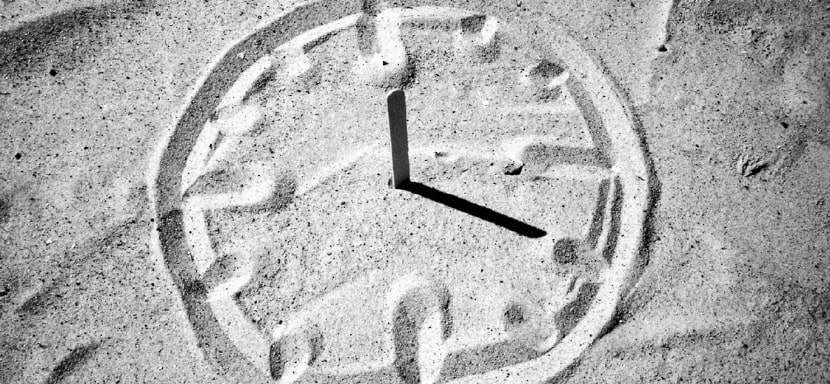
How to Use the Sun to Tell Time
Using the sun to tell time sounds like a Robinson Crusoe novel. Imagine being stranded on a desert island with no phone, clock, or sundial. You'd still have one incredibly reliable resource: the sun. It’s been doing its thing for billions of years, and by the looks of...
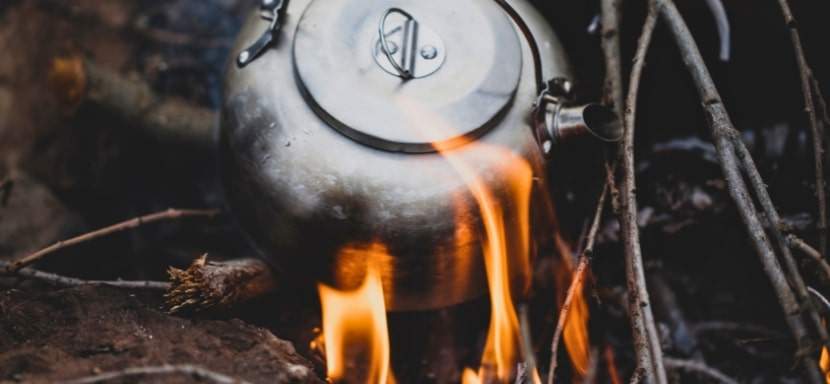
How to Purify Water Using Boiling
When you're miles away from civilization, lost in the wilderness, or don't trust what's coming out of your tap, the idea of pure, clean drinking water starts to sound like a mythical oasis. Maybe it's all those survival shows you've binged, but suddenly, you're eyeing...
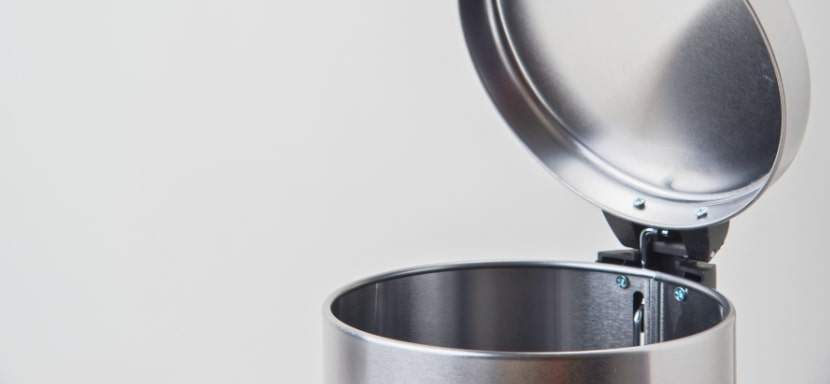
How to Build a Faraday Cage
Have you ever had one of those moments when your phone seems to be on its own personal field trip through Wi-Fi signals, Bluetooth, and all kinds of electromagnetic noise? Well, I have. The endless hum of invisible waves flying through the air makes you wonder—how can...
More Survival Scenarios

How to Survive a Layoff
When the Floor Falls Out: The Reality of a Layoff Layoffs feel personal—even when they're not. One day, you're responding to Slack messages and forwarding emails. Next, you're staring at your monitor as it logs you out... for good. Whether it's a restructuring, a...

How to Survive a Drug Test
The Cup, The Room, The Truth I never imagined I’d be so emotionally invested in a paper cup. But there I was, standing under the fluorescent hum of a strip-mall clinic, trying to recall the last time I ate a poppy seed bagel. That’s the thing about drug tests—they...

How to Survive an Interrogation
If you've ever been caught in the crosshairs of an overly enthusiastic mall cop or stared down by someone in a uniform with a clipboard and a glare, you’ve felt it — the chilly fingers of interrogation anxiety. And while most of us imagine interrogation scenes as...

How to Survive a Nightclub Shooting
Nightclubs pulse with life—lights flashing, music pounding, bodies packed tight on the dance floor. It’s a place to escape, feel the rhythm, and lose yourself in the crowd. But that same energy can turn deadly in seconds, transforming a night of fun into one of the...

How to Survive a Bachelor Party
A bachelor party is a delicate mix of celebration, chaos, and questionable decision-making, wrapped in the noble intention of sending the groom off into married life with a night he’ll (hopefully) remember. It’s a ritual as old as time—well, as old as men deciding...

How to Survive Your First Time at the Gym
Walking into a gym for the first time can feel like stepping into an alien world. The machines hum with purpose, the regulars move confidently, and you’re left standing there, clutching your water bottle, wondering whether you’re in the right place—or on the right...

How to Survive a Worldwide Communications Breakdown
Imagine waking up to silence. Your phone doesn’t buzz, your email won’t load, and even your local radio station crackles with static. A worldwide communications breakdown has hit. What next? For many, this doomsday scenario may sound like the opening lines of a...
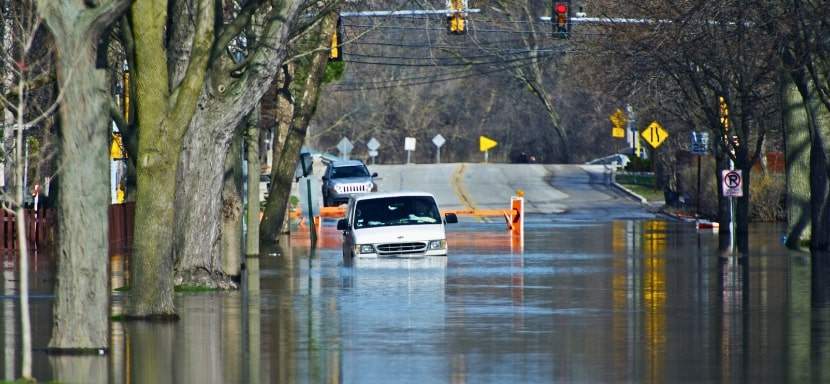
How to Survive a Flash Flood While Driving
Surviving a flash flood while driving requires quick thinking, calmness, and a solid plan to ensure your safety. Preparation can make all the difference between a close call and a catastrophe in emergencies like this. This guide provides practical advice to protect...
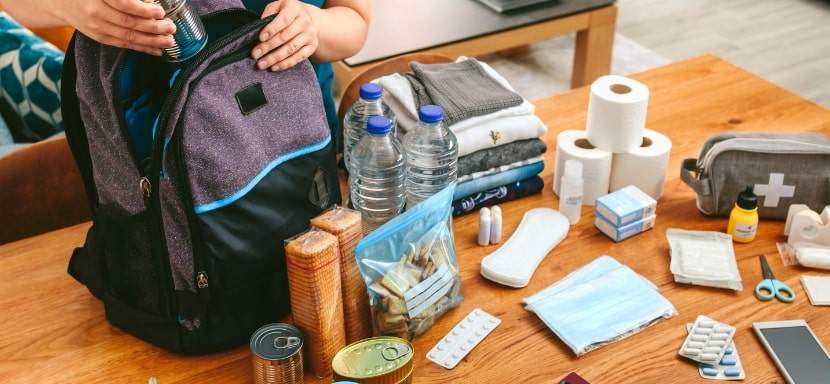
How to Build an Emergency Kit
Emergencies don’t knock politely at the door. They barge in, uninvited, like a distant relative with a penchant for drama, turning your world upside down without warning. Whether it’s a power outage, a natural disaster, or an unexpected evacuation, the key to staying...

How to Protect Yourself From Insects in the Wild
There’s nothing like being out in the wild—birdsong echoing through the trees, the fresh scent of earth, and a deep sense of peace that makes you think, “Ah, this is what life is about.” But then comes the buzzing. Mosquitoes, ticks, and flies swoop in like uninvited...
